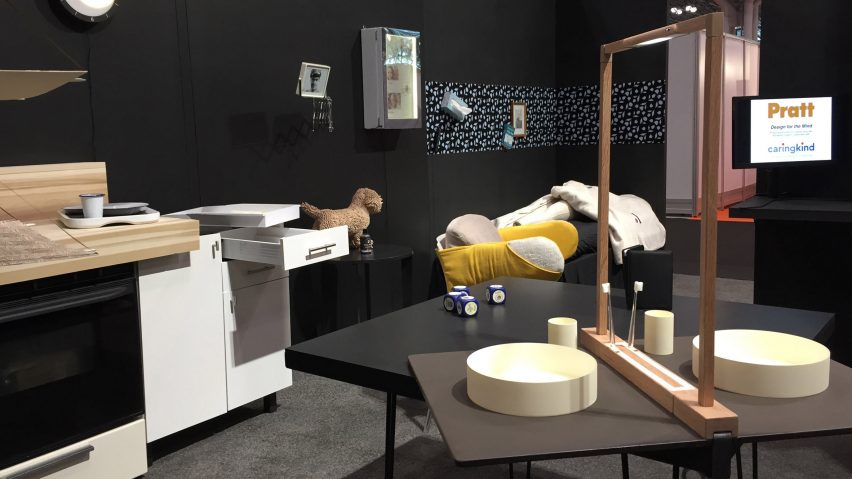Students from the Pratt Institute in New York have created a series of home products and accessories designed to help those suffering from memory loss caused by Alzheimer's disease.
Presented at the ICFF trade show in May, the Design for the Mind project is a collaboration between the Pratt Institute, the Cooper Hewitt museum and non-profit organisation CaringKind.
The industrial design students worked with medical experts and spoke to Alzheimer's patients and carers to design the range. Each item is intended to aid or assist in everyday tasks, or help avoid complicated or confusing situations.
"Objects and furnishings are understood not only as aesthetically pleasing, but are responsible for producing relationships, thoughts, ideas, and ways of being," said the school.
The series includes the Mirror Table by Sean Wang, which helps users relearn simple tasks by mimicking the actions of others.
The carer sits opposite the cared-for so they can see each other through an open wooden frame, and complete activities like brushing teeth or spooning food together.
"People learn by copying other people," said Wang. "In the later stages of Alzheimer's, familiar tasks like eating and hygiene have been forgotten and need to be relearned every time."
Jeff Yang's Sun/Moon Clock is intended to help its user distinguish whether it is day or night. Light behind its face illuminate in the shapes of the sun and moon depending on the time.
"Sensing night and day is thought of as an easy task," said Yang. "For people with Alzheimer's, though, dawn and dusk are hard to distinguish."
"The crescent moon comes on at night and the warm glow of the sun appears at dawn to help people perceptually understand whether it is AM or PM," he added.
Aaron Ethan Green designed the Clothing Organizer to simplify getting dressed.
The hanging storage compartments separate out different garments so they are easy to see and access, and are colour coordinated for each day of the week like a pill organiser.
"For many people with Alzheimer's, remembering to change their clothes is a challenge," Green said. "This product addresses that issue by combining the organisational clarity of a weekly pillbox with a hanging clothes display system."
Caitlin McIver's Out of Sight Drawer slots over a kitchen drawer to conceal sharp objects, while Braden Young's patterned Velcro Wall Covering allows user to store objects on the wall in plain sight.
Other products in the collection include a tactile wallpaper, a zimmer frame with a planter on the front, and a chair that gives hugs.
Design for the Mind was one of the winners of the Editors' Awards at this year's ICFF, which took place 21-24 May 2017 as part of the NYCxDesign festival.

